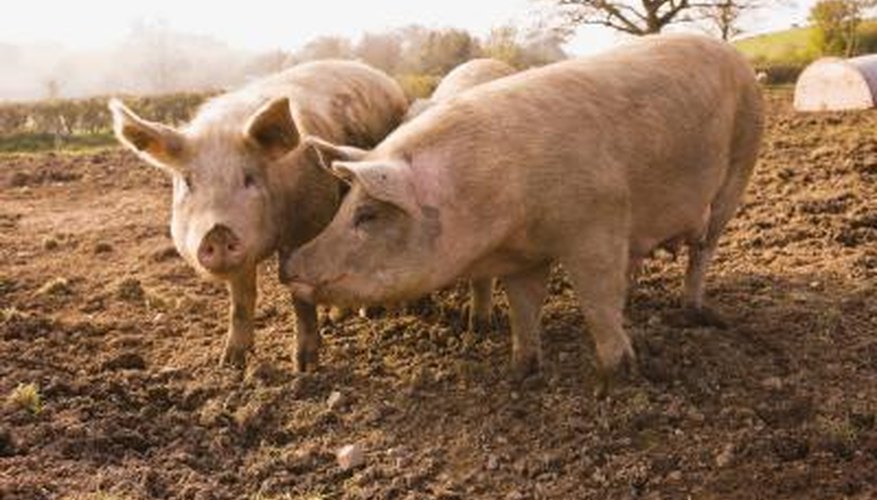Pigs, as farm animals raised for human consumption, are used to produce pork, bacon, sausages and other goods. Castrated male pigs are typically used for food. Although female pigs can also be eaten, they are more often used for breeding purposes. Female pigs are known as gilts and sows depending on their age and breeding status.
Gilts
A gilt is a young female pig that has not yet farrowed. Farrowing is the process of giving birth to piglets. A gilt is the equivalent of a heifer in cattle or a filly in horses. The word gilt has been used since at least 1300. It comes from the Middle English word "gilte" which was derived from the Old Norse word "gylta."
- A gilt is a young female pig that has not yet farrowed.
- A gilt is the equivalent of a heifer in cattle or a filly in horses.
Sows
A sow is an adult female pig that has had one or more litters of piglets. On average, sows carry their young for 114 to 115 days before giving birth. The word sow is very old and dates back to before 900AD. It comes from the Middle English word "sowe" which has roots in the Old Norse word "syr" and the Latin word "sus."
- A sow is an adult female pig that has had one or more litters of piglets.
Male Pigs
Male pigs are known as boars, although the word is also often used to describe wild pigs of any type or sex. Most domesticated male pigs are castrated and are called barrows. A barrow is the equivalent of a steer in cattle or a gelding in horses.
Young Pigs
A newborn pig is called a piglet. Most litters have 10 to 12 piglets, but there can be eight to 16. Piglet are normally weaned from their mother at three to five weeks of age, then are called weaners until they reach a weight of 18.1kg.
